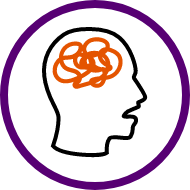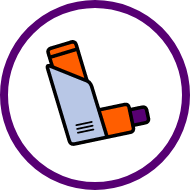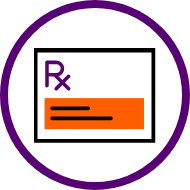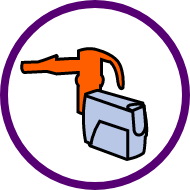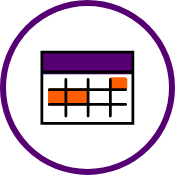Click on these common “myth-conceptions” about COPD and treatment. The real facts may surprise you.
Discussion with the COPD files experts who will help us dispel common myths and misconceptions around chronic obstructive pulmonary disease (COPD)
Host Serena Smith: Hi Everyone, I am your host Serena Smith and welcome to today’s discussion with the COPD files experts where we will be dispelling common myths and misconceptions around chronic obstructive pulmonary disease or I assume you might know it better COPD. COPD is a disease that makes it hard for people to breathe. Over 16 million people in the US are living with COPD. And while it’s a progressive disease meaning it gets worse over time. There are treatment options that can help manage symptoms. These options include different types of medicines delivered to the lungs through either nebulizers or hand-held devices. We will get into all that shortly. Those who are impacted by COPD may have some misconceptions about the disease and how to manage it. So we are here today to review the COPD files, series of cases that our expert panelists will look at to debunk myths and share the facts about COPD. With that I am pleased to welcome our expert panelists. With us today is Dr. Don Mahler, pulmonologist and Emeritus Professor of Medicine at Geisel School of Medicine at Dartmouth College. Next please meet Kevin Carney, a nurse practitioner and Manager of the Temple Lung Center in Philadelphia, and finally, we have Patrick Dunne registered respiratory therapist and President of Healthcare Productions Incorporated. Welcome everyone. Let’s get started. Doctor Mahler can you just do a little bit of table setting for us and explain what COPD is?
Dr. Mahler: Sure. As you described COPD means chronic obstructive pulmonary disease. In simple terms there is narrowing of the airways and there can also be destruction of the air sacs or alveoli in the lungs and cigarette smoking is the major cause of COPD in United States. Outside the United States, in developing countries, exposure to wood smoke indoors and burning other materials can also cause injury to the lungs. Because of the narrowing of the airways air may be trapped in the lungs and limit the ability of the breathing muscles particularly the diaphragm from working effectively. And that leads to the most common symptom of COPD which is shortness of breath or breathing difficulty with physical activities.
Host Serena Smith: I want to talk a little bit about treatment options. Mr. Dunne can you just give us overview of medicinally the treatment options that are available?
Mr. Dunne: The number one concern of shortness of breath so the treatment options are to try and reduce the episodes of shortness of breath and the impact that it has on activities of daily living. And there is basically 2 approaches in the international guidelines and one of them is basically using short-acting medications for quick relief to try and get kind of a handle on this steady deterioration of my breathing ability and the and those are called rescue inhalers. And the advantage we take a puff and within 2 to 3 minutes there is some effect and it’s probably going to last about 3 to 4 hours but that’s not really a long-term solution. And we now have a nice array of what we call maintenance medications that are also inhalable that can anywhere last anywhere from 12 to 24 hours. So, we have the maintenance medications once the patient has been stabilized and then we have the periodic use of the rescue or the emergency drug when there is this downturn in their episodes of breathlessness or when they start getting short of breath on activity and those are the 2 classes, that we have out there and they have to be effectively prescribed by the physician or the nurse practitioner and the patient has to be able to be take them and use them properly.
Dr. Mahler: Yes the good news is that these rescue and maintenance inhaled medications almost always can improve someone’s shortness of breath and that’s clearly evident in the studies that have been done to gain approval for these medications by the Food and Drug Administration and as was pointed out if they are used properly and the medication can get deep into the lower part of the lungs, they should definitely help someone breathe better or breathe easier.
Host Serena Smith: You know given that this is a progressive disease and something that people live with day-in and day-out I can only imagine that assessing when things have gotten worse can sometimes be a tough thing to have a handle on when you are the one living with it everyday. Do you have any advice for COPD patients in terms of how they can sort of stay on top of their progress or deterioration for that matter?
Mr. Carney: You know the first thing patients every 3 to 4 or 4 to 6 months I ask the patient to identify a certain level of activity that they are able to do before they get short of breath. You know for some of my patients their breathless, getting dressed or taking a shower, others its only after carrying heavy items up multiple flights of steps. So, identifying what’s the baseline level of activity that they are able to do before they get short of breath. So, when you are seeing them 3 months, 4 months, 6 months later asking them how their breathing is been, is it better, worse or about the same. Last time you could climb flight of steps without shortness of breath how about this time? and if they remain able to do that level of function and they are not having flareups and you feel pretty confident that the regimen prescribed is working.
Host Serena Smith: I want to go back to treatment specifics for a moment because something that’s perhaps something unique about COPD is that you got medication that can handle these like a few flareups that you have also got medication that is supposed to be sort of taken consistently day to day. So, if I am a patient who has COPD then I have a rescue inhaler and I also have maintenance medicine and let’s say my rescue inhaler is kind of like doing the trick for me can I forgo my maintenance medicine in that case? What would you recommend?
Mr. Carney: There are GOLD guidelines suggest that if you have a low symptom burden, low risks for flare-ups that patients are started on an inhaler and one could argue that a rescue inhaler would be that. On the other hand, if you are saying you are using a rescue inhaler 3, 4, 5 times per day every day and you are anxious that you don’t have it on hand then I would say your disease isn’t well controlled and you need to move to maintenance inhalers.
Dr. Mahler: So clearly the message should be you should be using your maintenance some are twice a day some are even longer acting once a day and then you compliment that with your rescue inhaler prior to activities if its exercise or if you are just having the bad breathing day and as we have talked about its clearly critical that the patient review inhaler technique with their health care professional at each and every visit.
Host Serena Smith: Ok. Let’s talk a little bit more about rescue inhalers. Do rescue inhalers work for every patient and or they these simplest COPD device to use?
Mr. Carney: You know If you have a patient on a maintenance medication that they are doing 1 or 2 puffs once or twice per day they get one to 4 breathes in 24 hours to get it right. If they are on a nebulizer medication that is going in over 6 to 8 minutes, they may have 80 to 120 breathes to get that medication delivery correct. So, I think the nebulizer deliver system is might go to for patients that don’t have the technique or have other comorbidities where they can’t use inhaler therapy correctly.
Mr. Dunne: And I think Kevin the point that you raised is that to get those one or 2 breathes correctly. There are several steps that have to be taken in sequence each time and you must also exaggerate your breathing to some degree and lot of COPD patients don’t like to exaggerate their breathing.
Host Serena Smith: For those at home whom maybe unfamiliar and for me can you explain how and where a nebulizer might fit in someone’s treatment regimen?
Mr. Dunne: Well it’s a nebulizer requires a power source, in other version nebulizer just taking a liquid solution prescribed by the physician or the nurse practitioner or the physician assistant and it puts it into a mist that can be inhaled but there has to be a power supply so we also have a compressor and so it’s usually referred to as a compressor nebulizer differentiated from the inhalers which tend to be self-contained. They don’t require any external power source. And the nebulizer in the past in the 70s, 80s, and 90s were very inconvenient we will talk about those little bit later on but the devices today are much more sophisticated, they are portable, lot of the technological advances we have seen in an audio visuals and all those other communication devices has been transferred over into these compressor nebulizers so they are much more efficient, but I am not so sure lot of people still understand how new and how efficient they are.
Dr. Mahler: I think it’s important also to recognize that our professional organizations and our panel of experts point out that generally you start with a hand held inhaler could be again meter dose inhaler soft mist dry powder inhaler and just because they are convenient and then if the patient can’t or doesn’t use the hand held inhaler directly correctly then you consider either a different hand held device or consider a nebulizer as an alternative delivery system and a lot of this is individualizing our assessment of our patients.
Host Serena Smith: It sounds like if with hand-held inhalers there are specific criteria that you are looking for, for somebody to be a decent candidate for using one what about when it comes to nebulizers is there a certain kind of patients who is sort of the ideal candidate for using a nebulizer or is it sort of across the board useful.
Dr. Mahler: The most common reason that I would prescribe a nebulizer is for the patient with COPD who is symptomatic and tells me that their maintenance inhaled medications just not helping them at all. And then I confirm that there you know by observation or discussion that using their inhaled medicine inhalers correctly and then I would say well you are doing it right it’s not working for some reason may be its not getting down deep into the lungs let’s try nebulized approach because we have very similar medicines in solution form to be placed in the cup connected to the by tubing into the nebulizer and see if that makes a difference.
Mr. Dunne: So I think there is a bias about only the sickest of the sick need the nebulizer it is an individual I think both of us, all three of us are saying its ought to be individualized based upon the patients living status at home, their support system, their cognitive level, there comorbidity conditions.
Mr. Carney: So, I think it’s important to identify the appropriate medication for the appropriate patients teach that patient how to use that medication appropriately follow them sequentially in a we have given some guidelines how to do that and if as their disease progresses, or comorbidities arise changing that delivery system to better treat our patient symptoms.
Mr. Dunne: COPD is more than just a lung problem. It’s a systemic inflammation problem that creates all kinds of different impacts on the body and there are numerous ways that the medications can be prescribed either singly or in combination and of a lot of options are out there so I think it’s very important that the patient be able to have access to a physician provider, a nurse practitioner, physician assistant that understands all the complexities and nuances that not only diagnosing COPD but also managing it and then helping the patients become part of the management team.
Host Serena Smith: To that end, do the three of you have advice in terms of how patients can advocate for themselves when they enter a doctor’s office, or they are talking to a health care provider to ensure that they are getting to the correct specialist, and they are assembling a right team around them.
Dr. Mahler: My advice to those with COPD and family members that might be coming in for the appointment is before the appointment have an idea or ask yourself what is my goal in seeing this health-care professional today. Do I want to prevent further flare-ups? Because I was just hospitalized for what we call as exacerbation or more easily called a flare-up, or is it because I am more limited by shortness of breath and can’t do the types of things I want to do, or is something else a problem may be that’s could be contributing to my complaints or difficulty. So having a goal before the appointment may be even writing down questions it could be on a piece of paper, it could be on your smart phone and make sure you let the health-care professional know may be no one prescribed the oxygen if they meet criteria to use oxygen which will also help them in their in their functional status so again I think there is lot of positive things that the healthcare system can provide its imperative for the individual patient to be open and to state here are my problems ok you help me with this and this and this.
Mr. Carney: And to add on this we have spoken a lot about some of the pharmacologic interventions in the different ways we deliver medications we have also spoken about empowering the patient and the care giver, to identify specialists and sub specialists in their community or their region who they should be seeking out for a second sometimes a third opinion for different clinical trials, treatment options etcetera but also understanding the role for non-pharmacologic therapies like pulmonary rehabilitation, losing weight or gaining weight if you are malnourished in treating some of the comorbidities atrial fibrillation, sleep apnea secondary pulmonary hypertension. So, it’s not just a lung problem specifically. It’s a whole body problem that Patrick eluded to earlier that empowering a patient to be an active participant there care kind of seek out that management and its other comorbidities. Expecting them to work as hard as their treating provider to make their symptoms better.
Mr. Dunne: So I completely agree having the patient or the care giver write down the questions in advance you have them right there and you won’t get distracted and you won’t walk out and say I forgot to ask this question.
Dr. Mahler: And the other thing that we should instruct our patients to do is if a new medicine is prescribed or instructions are given on how to use it. “Could you give me a handout?” “Could you write down the name of the medicine?” “Could you let me know is there a website I can look to?” “Is there a video available?” “Do you have a hand-out on how to use this particular delivery system?” And that provides a lot of help once the patient leaves the office area and helps with the retention.
Mr. Dunne: Today we have much better technology the nebulizers can be cleaned thoroughly and periodically sanitized they hold their performance for up to 6 months before they need to be replaced So we are seeing patients who have been on older nebulizers who come into the new realm of sophisticated nebulizers, and you can see the overwhelming change in their attitude.
Host Serena Smith: A big thank you to our panelists for helping us better understand the misconceptions around COPD. It’s been an education. To learn more about the COPD facts head to the myth-understood website theCOPDfacts.com and visit the myth-understood Facebook page for regular updates and information.
Thanks so much for tuning in.
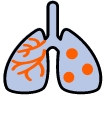
Why is reassessing
 A regular check-in with your doctor to find out if your COPD has changed since your last visit.
your COPD treatment
so important?
A regular check-in with your doctor to find out if your COPD has changed since your last visit.
your COPD treatment
so important?

What are some treatment options for COPD and which may be right for you?
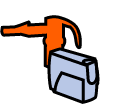
So, what is nebulized
therapy
 Medicine that gets into your lungs using a device that makes a fine mist for you to breathe in through a mouthpiece using a normal breathing pattern. for COPD?
Medicine that gets into your lungs using a device that makes a fine mist for you to breathe in through a mouthpiece using a normal breathing pattern. for COPD?


